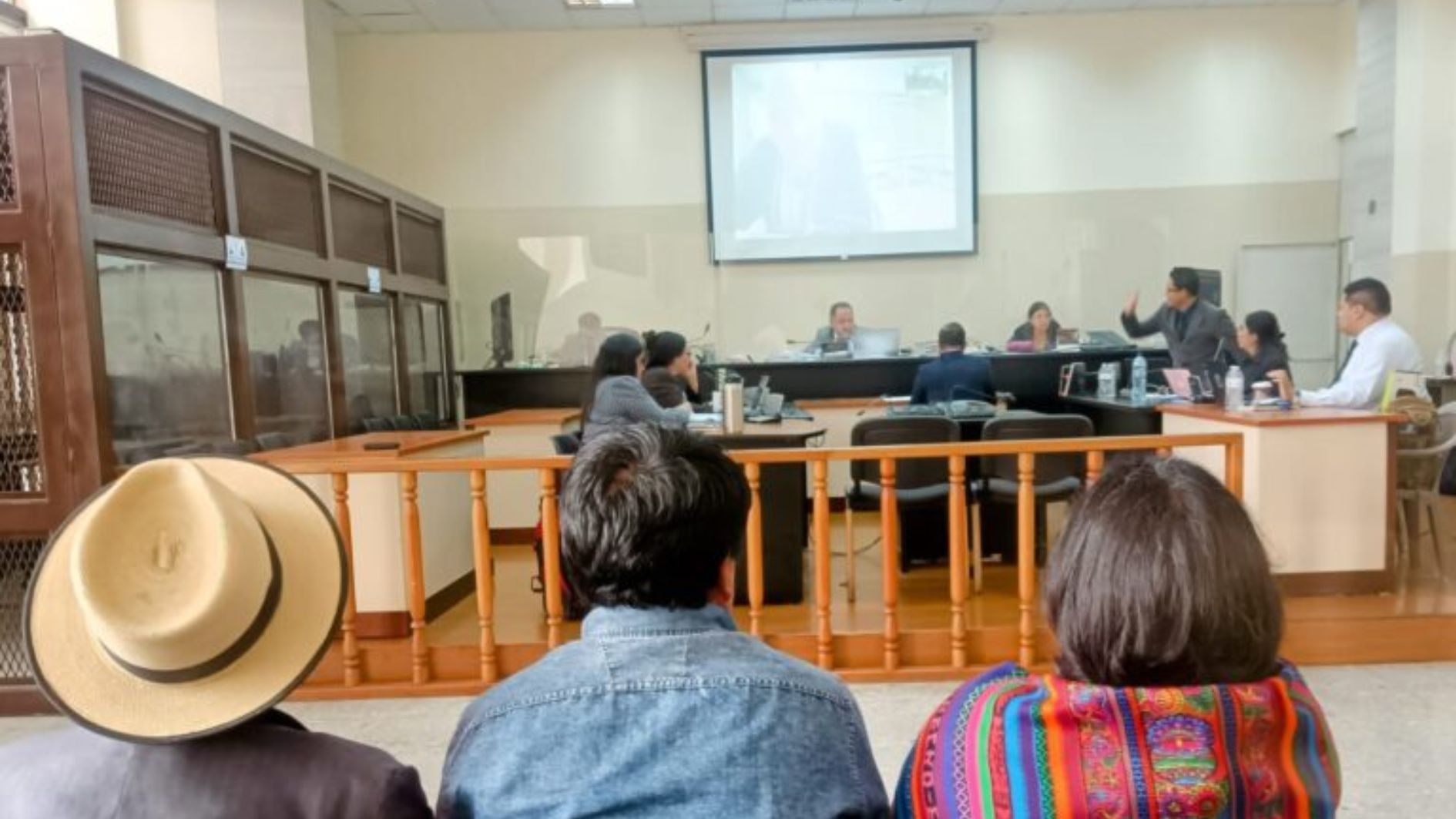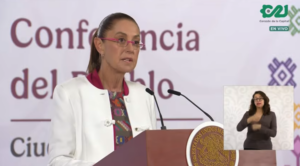
Published 07/15/2024 09:55 | Edited 07/15/2024 10:05
One by one, the testimonies of Mayan indigenous people who survived the massacres are closing in on the former Chief of Staff of the Guatemalan Armed Forces, Benedicto Lucas Garcia, who has been accused of “genocide” in the Court of Justice in the country’s capital. Now 91 years old, the retired general is one of the butcher commanders responsible for the official murder of 200,000 people and the “disappearance” of 45,000 – five thousand of them children – between 1960 and 1996. The case is supported by the victims’ accounts, and declassified documents from the CIA and the Guatemalan Army.
Benedicto’s testimony is virtual, and increasingly silent. Due to health issues, his brief words are delivered from a military center. On one occasion when I listened to him via video conference, when asked about the perversity of his crimes, he cynically responded “I am meditating.” In a more favorable context, he justified himself by saying that the bloodbath had saved the country from communism.
Read too: The genocide against indigenous people in Guatemala gave rise to “Palestinization”
Sworn in on August 15, 1981, while his brother Romeo Lucas Garcia was president, the psychopath had a postgraduate degree in “encirclement and annihilation” politics on his resume: training acquired at the School of the Americas (in the USA), with further training in the Zionist state. “Israel was the only country that supported us in our battle against the guerrillas,” Benedicto told the newspaper. Ha’aretz.
“It was from the Zionist school that he brought the terms ‘Palestinianization’, the practice of usurping territories, imposing model villages, concentration camps and forced labor on indigenous people,” summarized researcher and historian Raúl Nájera, who is advising the prosecution in the case. Raúl had his grandmother, mother and two uncles executed for opposing the neocolonial regime. Tortured, his father managed to escape. Lester, the father of the taxi driver who brought us from the airport, was not so lucky and was executed.
Indigenous people report atrocities
In contrast to this horrific scenario, the indigenous people are taking a stand against the Court to demand justice. After all, the last government even removed from school textbooks the Peace Agreements signed between the government and the guerrillas in 1996, which explained the scale of the massacre and the need for reparations.
The testimonies demonstrate in a compelling manner how, intoxicated by the counterinsurgency doctrine, “Guatemalan soldiers invaded villages, burned them, and killed men, women, and children, whether with a machete, an axe, a rifle, or at bayonet point.”
These are reports with names, surnames, days, times and places, which expose the limitless barbarity of how soldiers from an army trained, armed and financed by the US and Israel raped women and girls in long lines, one after the other, until the victims were completely exhausted or dead.
Read too: Killing center was built by Israel in Guatemala
The military did their “homework” in an attempt to defeat the guerrillas, which, as the Army High Command recognized, “were emerging victorious” and on the verge of creating a “territory free” from US domination. Something completely inconceivable for forces that had recently been humiliated and forced to leave Vietnam.
The memory of Jacobo Árbenz’s nationalist government (1951-1954) was also very present, as were the achievements made through the unity of an entire people. Árbenz invested in development, strengthened agrarian reform and gave the right to vote to indigenous people – the majority of the country who until then had been completely subjugated, subjected to a regime of forced labor and servitude – in a land where poverty, illiteracy and malnutrition were widespread.
Despite the local oligarchy, transnational corporations and the US and Israeli governments aspiring to return to the old “Banana Republic”, this reality is no longer possible, as the indigenous people of the “mountain that pours water” demonstrate in their tenacity and thirst for justice.
In her testimony, Dona Maria Caba Caba reported how the soldiers took turns in her village between January 16 and March 23, 1982. “At first, they had a list, which was the basis of their massacre, and anyone on it was executed. Then, they started killing everyone who, frightened, started to flee,” she said. And all they had left was to survive on the mountain because, when they returned, the village had been completely decimated, with the animals dead and the corn and beans burned.
Even more forcefully, Tiburcio Utuy describes the torture and massacre carried out in the Xix village, “between nine and ten in the morning”, on the fateful day of February 16, 1982. He narrates, perplexed, how the soldiers cut off a head with blows of a machete and opened the belly of a young woman who was pregnant.
“The policy was scorched earth; they killed horses, sheep, goats, dogs and chickens, just as they cut down avocado, orange and coffee trees,” Tiburcio said, emphasizing that anyone who managed to survive “would not be able to survive there.” When in doubt, two warplanes dropped bombs and three helicopters strafed the mountains, completing the dirty work. In the region where he was, the elderly man pointed out, “in just three months, 300 children died of measles and 100 men and women of hunger.”
Guatemalan Holocaust
The monstrosities of the crimes committed have been called “The Guatemalan Holocaust” or “The Mayan Holocaust,” with historians and sociologists recognizing the degree of degeneration of US and Israeli policies against human rights.
For veteran American journalist Mary Jo McConahay, “Israel should not be considered a mere proxy for the United States during Benedicto’s genocidal incursions into Ixil territory.” “Israel was a war machine in its own right, seeking arms markets and eager for allies. Tel Aviv supported the brutal Guatemalan army in its time and later,” she added.
In summary, Mary Jo reported what was done by the Zionist state. “Israel began selling weapons to Guatemala in 1974: armored vehicles, military communications equipment, light cannons, Uzi machine guns, and thousands of Galil assault rifles, which became the standard weapon of Guatemalan troops. In the 1980s, Israel built a factory in Guatemala to produce Galils and bullets to go with them. Tel Aviv made deliveries of its unique short takeoff and landing aircraft, the Aravá, several of which were later equipped with cannon shells,” she described.
The Tribunal will be on break from June 24 to 28, and will resume its work in July with expert testimony on International Humanitarian Law, Sexual Violence, Military Technique and Racism. Until then, we will be closely following the mobilizations of Guatemalan social movements, which are pushing for the truth to come to light and for justice to be imposed in their country and throughout humanity.
*Reproduction of this content is free and open to the public, as long as the source and list of entities supporting the coverage are cited: Union of Teachers of the Official Education of the State of São Paulo (Apeoesp), Federation of Workers in Credit Companies of São Paulo (Fetec-SP) and Union of Workers in the Construction and Furniture Industries of Araraquara (Sticma)
Source: vermelho.org.br

